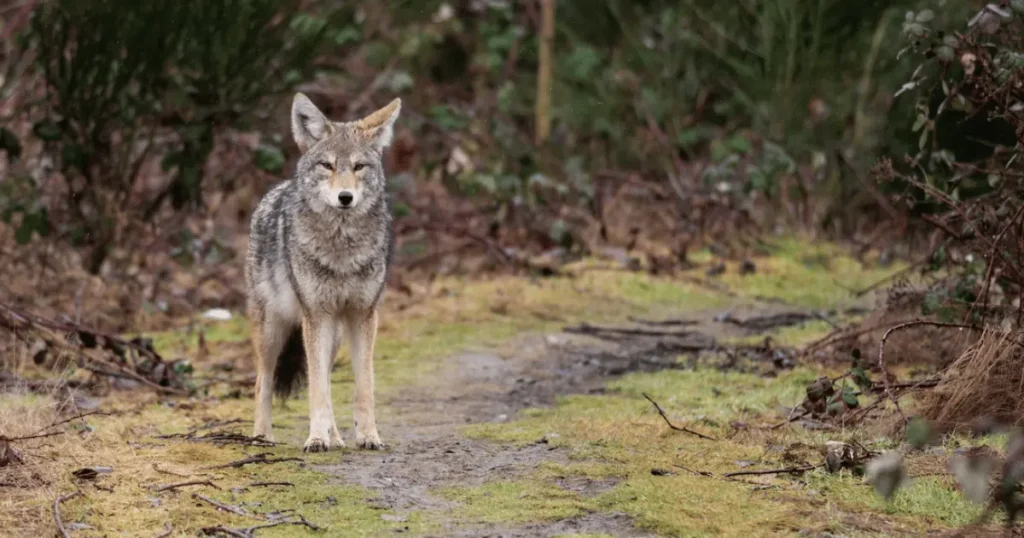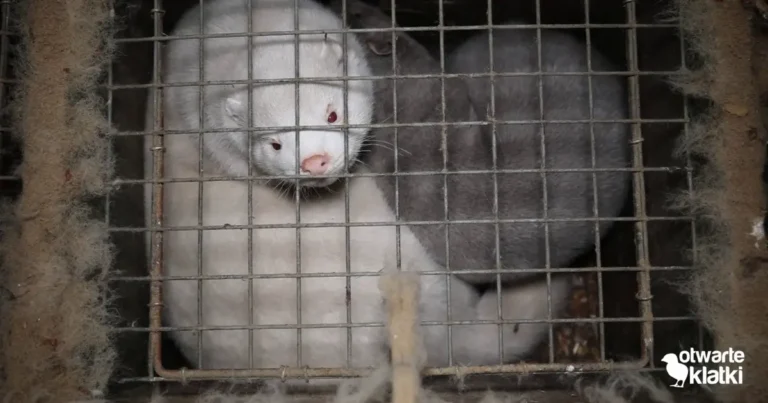
Photo by Harry Collins / Getty Images
The Fur-Bearers has learned of a plan to trap and collar coyotes in Stanley Park and Pacific Spirit Park as part of a UBC research project on coyote behavioural ecology. We shared our concerns about the trapping methods used in this project in a recent Global News video below.
We are alarmed by statements made by the UBC researcher that suggest padded leg-hold traps are not painful for coyotes, and that anyone can put their own arm or finger in a leg-hold trap. The Fur-Bearers has contacted UBC about these statements as there are peer-reviewed studies and documented evidence on the harms that leg-hold traps cause to wild animals, including coyotes.
Do leg-hold traps harm animals?
The Fur-Bearers has a lengthy history of highlighting the animal welfare concerns of leg-hold traps. Click this page to learn more about leg-holds and other common traps used in Canada. Injuries to target and non-target animals are well-documented in peer-reviewed studies, in the media, by The Fur-Bearers, wildlife rescues, and other animal welfare organizations across North America.
In some cases, animals try to free themselves from the trap by gnawing on their captured limb, breaking their teeth and bones in the process. For non-target animals who may be smaller than what the trap is designed for, they can experience lacerations, broken bones, or even death. These traps cause distress to captured animals as they will fight and struggle to free themselves from restraint, sometimes injuring themselves in the process.
There are many variables that can result in pain and suffering to a trapped animal, even if they’re trapped for short periods of time. An individual’s response in a trap can determine welfare outcomes – it’s not always the trap itself, it’s the behaviour of the animal in the trap.
What does peer-reviewed research say about leg-hold traps?
Much has been written about leg-hold traps and the suffering that they cause. In a 2007 article in the journal Animal Welfare, Mammal trapping: a review of animal welfare standards of killing and restraining traps, the authors review different trapping methods and highlight the pattern of injuries caused by various traps, including leg-holds.
For coyotes, (canis latrans), one of the referenced studies found that 84% of coyotes suffered minor injuries, while 16% suffered major injuries in padded leg-hold traps. Another study found that 47% of coyotes suffered minor injuries, while 53% suffered major injuries in unpadded leg-hold traps. The article provides an overview of the nature of injuries to various species caused by leg-hold traps. The authors note:
"Leg-hold traps are considered inhumane and banned within the EU and 80 countries worldwide (Fox 2004a); nonetheless, they are a common capture device in North America and Canada. Across the literature, the majority of studies show a significant percentage of trapped individuals suffering major injuries (Table 5). If the criterion used is that 80% of individuals have nothing more than minor injuries (Anonymous 1998a), it is clear that both padded and unpadded leg-hold traps fail in this respect."
Iossa et al. (2007)
This article demonstrates the animal welfare implications of using leg-hold traps for coyotes and other wildlife. The authors write, “We conclude that many of the practices commonly used to trap mammals cannot be considered humane.” Traps used in Canada today, including padded leg-holds, are inherently inhumane and result in suffering to both target and non-target animals.
The standards framework to certify traps is also problematic, as a 2020 article on the Agreement on International Humane Trapping Standards (AIHTS) points out. The authors conclude: “Our evaluation shows conclusively that the AIHTS standards do not reflect state-of-the-art trapping technology and that continued maintenance of these outdated standards perpetuates animal pain and suffering.”
From documented incidents to research on the impacts of traps, there is no disputing that that leg-holds cause pain and suffering to animals.
Anyone concerned about the plan to trap coyotes in Stanley Park and Pacific Spirit Park is urged to contact the University of British Columbia (via form only) and the City of Vancouver.
